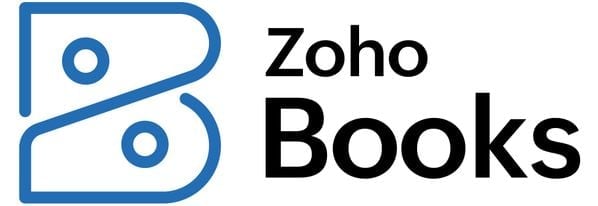10 Common Accounting Errors and How to Avoid Them
These common accounting errors can cost you. Here's what they are, why they matter and how you can avoid them.

Many, or all, of the products featured on this page are from our advertising partners who compensate us when you take certain actions on our website or click to take an action on their website. However, this does not influence our evaluations. Our opinions are our own. Here is a list of our partners and here's how we make money.
Table of Contents
Accurate accounting is critical to your business’s success. Without accurate accounting:
You won’t have the information necessary to steer your business toward profitable growth.
Correctly filing your annual tax returns can become cumbersome and rife with errors.
Your business could be left vulnerable to fraud.
The best way to ensure your accounting is accurate is to know the common accounting errors and how to avoid them. In this article, we’ll share the 10 most common accounting errors — and the simple steps you can take to make sure you don’t make them.
Not all accounting errors are created equal. Most of the errors addressed here are technical errors, but there are two common administrative errors we’ll address first.
1. Improper record-keeping
We get it, no one likes filing. Digital technologies have virtually eliminated piles of paper you must sort into folders in filing cabinets, but that doesn’t mean record-keeping and records management are obsolete. You must manage your digital records with as much care as you would paper records.
Why this is important: In a tax audit, you might be called upon to provide receipts or other records to prove the legitimacy of a business expense. But the importance of proper recordkeeping goes beyond tax ramifications. Should you decide to sell your business, the buyer will likely request an external audit of your company’s financials or a formal valuation of the business. In both cases, receipts and other documentation will be required to verify the accuracy of your financial statements.
Proper recordkeeping also prevents employee fraud. When employees know they will have to submit receipts for purchases, they are less likely to use business funds for personal expenses.
How to avoid: Implement a receipt capture, filing and backup system, and enforce its proper use. Apps like Receipt Bank and Hubdoc make it easy to establish such a system.
2. Inadequate checks and balances
It’s common for one person to handle all financial matters in a small business. After all, there’s only so much work to do, and it doesn’t make sense to hire additional staff just for the purpose of having checks and balances. Unfortunately, inadequate checks and balances can spell big trouble for your business.
Why this is important: If someone other than you, the business owner, is handling all the financial affairs for your business, your business is vulnerable to fraud. Even if your employees are like family — or even if they actually are family — no one person in the business (aside from the business owner) should handle business funds without oversight.
How to avoid: Implement checks and balances as much as possible in your business. At a minimum, ensure the person who does the bookkeeping in your business isn’t the same person making deposits for the business. Avoid giving employees signing authority on your business bank accounts. And make sure you review your business’s bank statements — including images of canceled checks — on a monthly basis.
3. Changing a closed period
Changes to a closed accounting period can throw off your financial statements, causing you to make business decisions based on faulty information. If you change the information in a period for which a tax return has been filed, you might also have to file an amended tax return. These mistakes in your books are easy to avoid but can be costly to fix.
Why this is important: An accounting period is considered to be closed once all the data for the period has been entered, bank and liability accounts have been reconciled, and the reports have been deemed correct. Any changes to a closed accounting period require you to complete the closing process again.
Unfortunately, it’s very easy to accidentally post transactions to a closed accounting period. All it takes is incorrectly keying in the date of the transaction. But there is good news: One simple step at the end of your accounting period can prevent this error.
How to avoid: Most accounting software allows you to set a closing password on your books at the end of each accounting period. Yet many business owners — and bookkeepers — don’t use this feature.
If your accounting software allows for a closing password, start using it. The eight-digit date for the end of the period — for example, 06302020 for the period ending June 30, 2020 — is easy to remember if you do need to change a closed period. If you try to post or change a transaction in a closed period, you should get a popup warning you of the change, preventing you from making a change in error.
4. Skipping bank reconciliations
Bank feeds synced with accounting software have allowed for streamlined data entry and real-time matching of the account balances in your books to the balance shown by your bank. However, this doesn’t preclude the need to reconcile your bank and credit card statements every month.
Why this is important: When you reconcile your accounts at the end of the month, you validate the information in your books against an external document (the bank or credit card statement). Doing this not only helps you detect and address errors, but it also helps you prevent fraud.
How to avoid: Make it a practice to reconcile your bank and credit card accounts every month. Put a note in your calendar to ensure this is done within a few days of receiving your statements. If you’re using bank feeds, reconciliation should only take a few minutes.
5. Not reconciling loan accounts
Bank and credit card accounts aren’t the only accounts you need to reconcile. You should also reconcile your loan accounts each time you receive your loan statement.
Why this is important: Reconciling your loan accounts is the easiest way to make sure the liabilities portion of your balance sheet is accurate. It also ensures you record the interest portion of your loan payments correctly. Too often, the entire loan payment is posted against the principal balance in your books, which means your liabilities and your interest expenses will be understated.
How to avoid: As with your bank reconciliations, put a note in your calendar to ensure your loan accounts are reconciled regularly. At a minimum, you should reconcile your loan accounts prior to filing your tax returns each year.
6. Overstating revenue
This is an especially common accounting error for companies that issue invoices to their customers for payment later and also use bank feeds for data entry purposes. Without proper workflows in place, a business can easily show nearly double its actual revenue on its profit and loss statement.
Why this is important: Overstated revenue can cost you thousands in taxes you don’t really owe. What’s worse, though, is you might think your business is having a banner year, only to discover revenues are actually down.
How to avoid: This error is easy to avoid by setting up proper workflows. Make sure your bookkeeper knows all incoming payments need to be entered into the accounting software correctly and posted against open invoices instead of posted straight to revenue. A monthly review of your accounts receivable will quickly show you whether or not this process is being followed.
7. Undeposited funds on the books
Similar to Number 6, this error occurs mostly in companies that use bank feeds for data entry purposes. And, as with overstated revenue, this error can be avoided with proper workflows. When there are undeposited funds on the books, it means the payment has been posted into the bookkeeping software, but the deposit hasn’t been posted.
Why this is important: Undeposited funds on the books is another way revenue can be overstated. As mentioned above, this can cause you to overpay your taxes and make incorrect assumptions about your business’s growth.
How to avoid: Make accurately entering deposits part of your accounting process. You can verify the process is being followed by looking for the undeposited funds line on your balance sheet each month. The balance in this account should be $0 (it might not appear on your balance sheet at all if there’s no balance in the account). If there is a balance in this account, investigate. It’s possible you were holding a deposit at the end of the month that has since been taken to the bank, but if there are very old transactions in the undeposited funds account, you have an accounting error on your hands.
8. Balance sheet items on the profit and loss statement
This accounting error most frequently happens when a bookkeeper without accounting knowledge is maintaining the books. In this error, asset purchases, liability payments and owner’s draws or shareholder distributions are recorded as expenses, and loans might be recorded as income.
Why this is important: Your profit and loss statement should show the revenues and expenses for a defined period of time. Your balance sheet is a summary of what you own (assets and equity) and what you owe (liabilities) at a moment in time. The two financial statements serve different purposes and “should” be reviewed separately.
That said, sometimes a bookkeeper will make the strategic decision to include balance sheet items on the profit and loss statement in order to show the business owner their business’s cash position, without the need to use the cash flow statement. Although this is technically incorrect, we advocate doing whatever is necessary to help the business owner understand their business finances better.
How to avoid: Ensure your bookkeeper understands accounting basics, or have them work with your accountant to establish good bookkeeping practices. Also, ask your accountant to review your financial statements on at least a quarterly basis. Finally, if balance sheet items are included on the profit and loss statement for management purposes, make sure the statements are corrected prior to filing your tax return or using your statements to apply for financing or funding.
9. Over-relying on automation
Automation has simplified much of the bookkeeping and accounting process, but it’s not infallible. The most common issues we see associated with this error are incorrect payee names on transactions, transactions being posted to the wrong expense accounts, and owner’s draws or distributions posted as transfers to asset accounts.
Why this is important: Accounting software that utilizes artificial or augmented intelligence is constantly “learning.” It makes suggestions and assumptions based on similar transactions in your business’s history. It may also use aggregate data collected from other businesses.
This learning process means the automation is not infallible. Of the three errors mentioned here, the incorrect payee name on transactions is the one likely to cause the most trouble. This error can lead to incorrect reporting on Form 1099, which can cause your vendor to be taxed on income they didn’t actually receive.
How to avoid: Again, a workflow and a predetermined process can help avoid this error. Make sure the person doing your bookkeeping knows not to simply accept transactions in the bank feed without first making sure the suggestions for the transaction are correct. Doing data entry in advance and then using the bank feed to match the transaction is a best practice that can also help you avoid this error.
10. Not using your accounting software properly
Today’s accounting software is extremely powerful. It can produce very specific and detailed reports for you to use to make business decisions. The caveat is that the software must be used properly.
Why this is important: Accountants and old-school bookkeepers are very fond of journal entries. Bookkeeping using journal entries only, or fixing accounting errors with journal entries, will give you correct financial statements. However, it will wreak havoc on the subsidiary reports you might want to use in your business.
How to avoid: Make sure the person doing your bookkeeping knows how to use the software properly. Most modern accounting software is form-based, making journal entries a sort of “last resort” for data entry.
A version of this article was first published on Fundera, a subsidiary of NerdWallet
| Product | Starting at | Promotion | Learn more |
|---|---|---|---|
 QuickBooks Online NerdWallet Rating Learn more on QuickBooks' website | $35/month Additional pricing tiers (per month): $65, $99, $235. | 50% off for first three months or free 30-day trial. | Learn more on QuickBooks' website |
 FreshBooks NerdWallet Rating Learn more on FreshBooks' website | $21/month Additional pricing tiers (per month): $38, $65, custom. | 70% off for 4 months. 30-Day Money Back Guarantee. | Learn more on FreshBooks' website |
 Xero NerdWallet Rating Learn more on Xero's website | $20/month Additional pricing tiers (per month): $47, $80. | 90% off for 6 months. | Learn more on Xero's website |
 Zoho Books NerdWallet Rating Learn more on Zoho Books' website | $0 Additional pricing tiers (per month): $20, $50, $70, $150, $275. | 14-day free trial of the Premium plan. | Learn more on Zoho Books' website |

